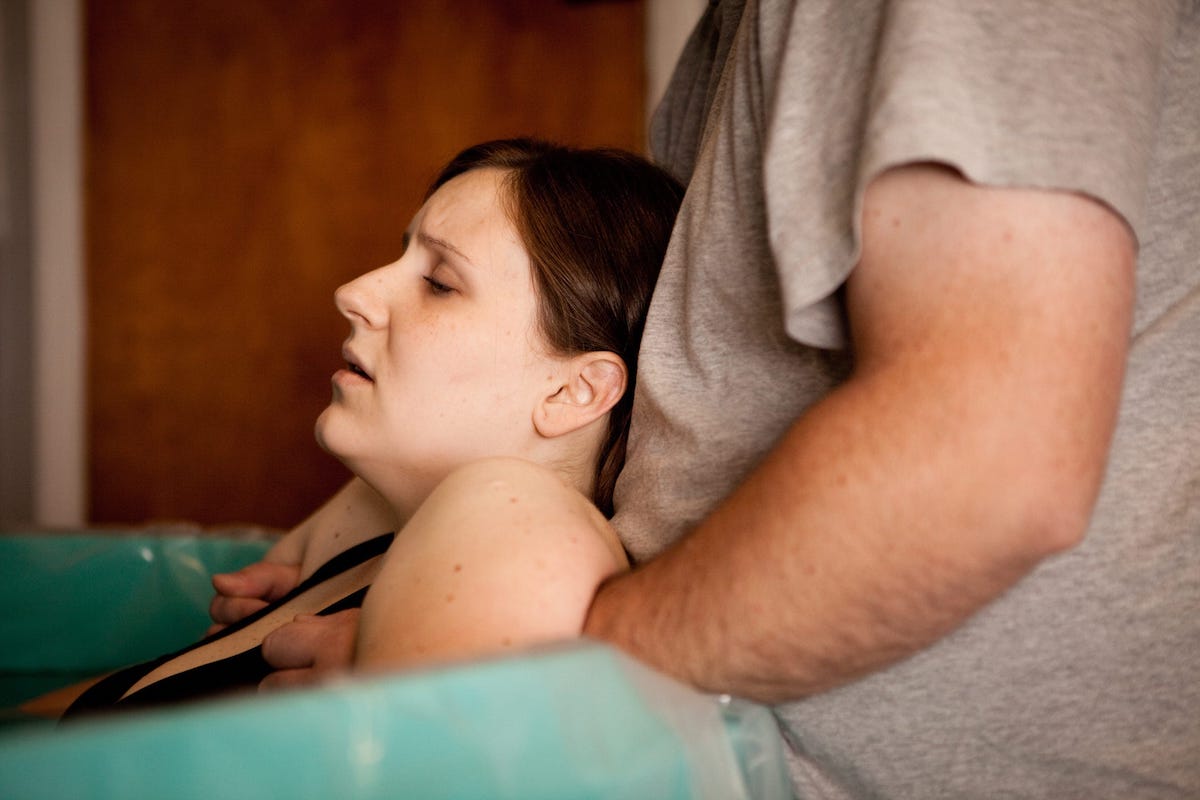We’re finishing out Black Maternal Health Week with an interview with Erica Chidi — writer, entrepreneur, doula, and more. We talk about issues around Black maternal health, maternal health in general, and possible solutions.
We discuss, among other things, the LOOM app, which will launch in the summer. To stay updated on that, sign up here.
We are also doing a book giveaway with Erica on my Instagram. My book Expecting Better and her book Nurture are often next to each other on the bookshelf. So we’re excited to give away 10 signed sets of both of our books. Head over to Instagram to enter to win!
And the key reason for developing this platform is because health literacy is really poor for a lot of folks out there. A lot of people, regardless of their gender, have a basic understanding of how their bodies function and how to take care of themselves in and out of health crises.
LOOM actually was a physical space in Los Angeles from 2017 to 2019, where we taught classes across the female-specific life span — across women’s health, essentially. Everything from period classes to fertility classes, pregnancy classes, miscarriage and abortion support groups, queer-centered family planning support groups… And so, what happened in the physical space essentially was a microcosm of what we eventually wanted to execute on in a tech stack, as they say.
I was a doula and health educator for about 10 years before deciding to raise venture capital and pivot into tech. And I think I spent a good amount of that decade really getting up close to what the pain points were for women and their partners moving through these really important life events like pregnancy, like trying to get pregnant, or starting to move through perimenopause. What I realized is that, regardless of your background, the great equalizer is the fact that most people have the same questions when it comes to these experiences. And I think there hasn’t been a way to solve for this type of health literacy in a way that feels engaging and fun and isn’t so focused on pathology or something being wrong. I think the focus is trying to support people around preventative health.
I got my start as a doula working in the San Francisco county jail, providing childbirth education to folks that were currently incarcerated. And at the same time, I was also servicing the top 1% to 5% of people living in a really fancy San Francisco neighborhood, who also needed doula support. And what I noticed across both of those groups of people is they have basically the same questions about pregnancy and their bodies and the next stage of their lives.
And so that lack of health literacy, that lack of understanding, is what unifies us. And it’s also what’s been my key motivator, in all iterations of my career, is to try and close that knowledge gap.
And it also has a lot to do with control. I think for women or nonbinary people that have that anatomy, the more that we know about it, the more control we have over our ability to procreate whether we want to or not. And I think our culture is definitely one of misogyny, one of patriarchy. The desire to relinquish any control to women has been severely undermotivated.
And economics too, obviously. I think there’s a big piece there. Maybe less so now in certain ways, but I think those three pieces are the why.
I think there is starting to be a tide shift. Values-based care is really starting to become more and more of the focal point for larger care organizations. And thinking about paying providers for their outcomes, not just paying them for service, which is the really big paradigm shift that’s happening. Because if we’re incentivizing providers to have really strong outcomes, it means that the way that they practice medicine would have to fundamentally change. And I think that there’s some deep alignment there in that change with younger providers graduating and coming out, wanting to practice slightly differently, or having just a different ecology for themselves around how they want to be with their patients and be with the work.
That said — I feel like I can really dive into the numbers here, because it’s you! — the demand for OB-GYNs versus the supply will outstrip each other by 2030. So there’ll just be so many people that need those services and not enough OBs to go around. So I think we’re in this time that’s very interesting, where there does have to be a change, primarily because the foundations are shifting so much in terms of what’s available from a care perspective.
And the thing about pregnancy, unfortunately, in the United States is it’s deeply pathologized and it’s very interventionist in terms of how the medicine is administered here. But being pregnant is actually not a pathology; it’s a normal process. Things can happen during pregnancy, but it’s not a disease. So the idea of syncing up with 10 or 15 other people that are going through pregnancy, it is helpful if you’re all around the same time, because you should all be having a lot of the same experiences. And there can be a lot of support gained from being able to touch in and talk about those experiences as well.
But going back to what you were saying about how medicine is practiced overall, given some of the strains that are coming in from a supply-and-demand standpoint, a big part of that is going to be the improvement around health education and health literacy. People need to have a better understanding of their bodies, what’s going on, in order to make better health-care decisions, to advocate for themselves, to help support providers who are burned out and overwhelmed. We know that. And I think there needs to be more equity in the exchange.
And I think, especially when it comes to Black women and Black-bodied people experiencing health care, due to systemic racism built in from the very foundation of medicine, education and a framework of discussion and an acknowledgement of racial anxiety — which is what the New York Times piece that myself and Dr. Cahill co-authored a couple years ago is about — really has to be at the forefront. Which is why I think the values-based care trajectory is so powerful, because it’s about outcomes. So if people are dying and people aren’t making it through and you are now being reimbursed based on how many people you keep alive or how many people thrive, I think unfortunately economics might be the answer to some of the racial disparities that we are experiencing, because people are not going to not want to be paid well.
I mean, obviously ideologically it aligns with me and anybody who is a compassionate human, but I think knowing that economics is what really makes the world go round, it might end up being a key motivator.
The idea that providing providers with different kinds of incentives might affect their behavior presumes that there is something that they are doing that we could identify that is changeable. That there’s some underlying issue which is alterable in the behavior of the medical system. I think that would be one interpretation of that. And I’m curious if you have thoughts on: is there something we could point to as, this is the thing that needs to change? An underlying unsolved problem, a misunderstanding, something that we could point to there?
So I think as we have been saying, because the values of health care and how it’s delivered in this country are already not aligned for good outcomes writ large, it really makes care consistently susceptible to being racist. There’s just not room. Obviously the Hippocratic oath is Do no harm. But again, the framework of medicine was developed by white people. So it’s Do no harm to us, because it’s really just us that are here administering the care. And so it’s a very interesting and very complex problem that probably won’t be solved in our lifetime. I think it’s only right now, real conversations are starting to be had in medicine around race and how it impacts care. We’re just really starting, and so we have a long way to go.
But I think in terms of what you were saying around behavior change and identifying what behaviors are problematic, there’s just so many steps that are creating the problem that we have. And a lot of it has to do with before someone even starts medical school. It has to do with just how we’re socialized and how we are socialized to see each other. And so the outcomes focus is an economic lever that I think will help support this more foundational, ideological DEI work that is now in medical school and in the day-to-day for providers. If we can have economic incentives coupled, and then political incentives too like the Momnibus… I would say all of these pieces have to compound for there to be actual systemic change, because it’s a systemic problem. So we can’t just look at providers only. We’ve got to look at payer, we’ve got to look at politics.
I think, again, in order for there to be systemic change, all of these things need to work together. And you know, I think even this conversation that we’re having right now is also a part of it. It is a collective shift that is going to have to happen over a number of decades. However, I do think change is happening, but it’s happening really slowly.
One of the key tenets of LOOM, and really just of my body of work, is this idea of biological empathy. Which is, what would happen if you had enough health education to be able to have a sense of empathy for an experience that you haven’t gone through yet? So really what’s happening in the app is we’re serving you up education about menopause regardless of where you are in your life span, information about IUDs even if you don’t use one.
Because really what we noticed in a lot of our user research is that women, or nonbinary people, want to share health information with people that they love or their community. It’s like if they find out information, they want to share it. In many ways, I would say it’s kind of the genesis of your work. It’s like: What’s happening? I want more people to know about this. It’s a very natural inclination, actually, and it’s pretty ubiquitous. But not everybody has the means or the time or the access to be able to leverage that information that they have found in a way that feels supportive.
And so the app is about you getting to learn, you also getting to share what you’ve learned, and then also amplifying voices of women’s health from around the world. There is an audio component there, where you’ll be able to listen to stories from people you know, people you don’t know, to learn. And we did that because there’s a really huge gap in women’s health research. Again, the economics of researching women is not super-lucrative, apparently. Maybe that’s going to change. But that currently is how it is. And so what I learned when we had our physical space for LOOM is that women’s stories are actually anecdotal evidence that other women can cling on to make sense of their own bodies, even though there’s not an article in a journal about this thing. If three or four women are experiencing it, more than likely there’s probably more, and there’s something to cling onto there.
And so the app really brings together this factual, evidence-based information so that it’s easy to consume, so that women have more visibility into what is the latest information that could be helpful for them. And then there’s actual stories from real women that can also help connect the dots if there isn’t something in the research. And so we’re bringing those pieces together, and it’s exciting.
Look — it’s not a panacea. It’s not like rocket science. It’s not a wearable. But it’s pretty important, because what happens is something’s going on and you end up on WebMD or you end up down some rabbit hole. And we’re really trying to be a home base for women throughout their life to get this information, to share it, and we look forward to being able to really iterate and do more with the platform as it grows.
One of the things we really wanted to solve for as well, knowing everyone is so busy, is how do you get a lot of value and not necessarily have to spend a lot of time with us. And so I really feel like the app does that. Like you can get a lot, but you don’t have to live there. Which is I think sometimes the definitive feature of a lot of social apps; they want to take as much of your time as possible.
Okay. So I want to end by coming back to this New York Times piece from several years ago, which I think is a really fantastic and important piece. But some of it is really focused on, from the perspective of a Black woman, how can you advocate for yourself in these settings? So do you want to take two minutes and talk a little bit about what advice you would give to Black women who are going through pregnancy in this space that we know has these underlying issues and want to be in a position to best advocate for themselves?
That said, my recommendation is really reminding the provider that you are Black. And how that impacts your outcomes in your care, based on what you know. Because again, going back in our conversation about some of the key mandates in health care, it’s speed and volume, right? Obviously it’s care — but it’s care, speed, and volume. The speed is what creates a big part of the problem in the patient-provider rapport. And so when I say remind the provider that you are Black and your outcomes and how that impacts you, it’s really just slowing the provider down to take you in and take a beat and to be cognizant of that reality. Because it is very much like, I got 15 minutes with you, what do you need?
Both my parents are clinicians, and so I’ve always really come to this space with a very humanistic approach. Like, they’re overwhelmed too. They have a lot that they’re holding, especially, inside of the pandemic that we’ve been moving through. So it’s bringing them into your story, bringing them into your experience, and really trying to ask them to be collaborative with you about avoiding these possibilities based on what you know.
And then I think on the other side of that, my other recommendation is for Black women to have a care buddy — have a partner, friend, family; bring somebody with you that can help to be a second set of eyes and ears that can help remind you of what you need inside that appointment. Because, I mean, even for me, I’m coming with all the things, but depending on how long I had to wait for the appointment, depending on how I’m feeling, there’s all of these components that can make it very difficult to optimize an appointment. So having a care buddy would be really important.
And then thirdly — I like to call them “speed bumps” for the appointment to slow it down — is actually to bring in written questions on a piece of paper printed out, or on your phone; put an alarm in the middle of the appointment to get your phone to go off, to be like, oh, I have this question. Those speed bumps, I think, can help provide a little bit more clarity or a little bit more space so the information can metabolize better or more before you’re already out the door, right? Those are important things as well.
And I think the last thing, too, I think for pregnancy: consider bringing your own robe to your appointment, if possible, that you use for your appointments. Because that’s another way to, again, differentiate yourself and also to keep you feeling less like a patient, more like someone who’s well. Those are things that we sometimes would recommend when I was a doula working in the hospital for labor. It’d be like, bring your own labor gown that can put all the leads and everything in. It doesn’t interrupt the intervention or medical process that’s happening, but it’ll make you feel more comfortable. And that might be also a conversation point for your provider. They’ll be like, oh, that’s a nice robe. They’ll be like, this person’s different, they’re doing something different. Again, I wish we didn’t need to do small tactics like this, but I do feel it’s: every little bit helps.
Thank you so much, Erica. This was really a fantastic conversation. And I know everybody will be learning a lot more about themselves come July. But I just really appreciate you being here.
Community Guidelines















Log in